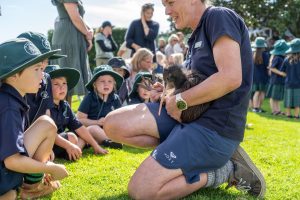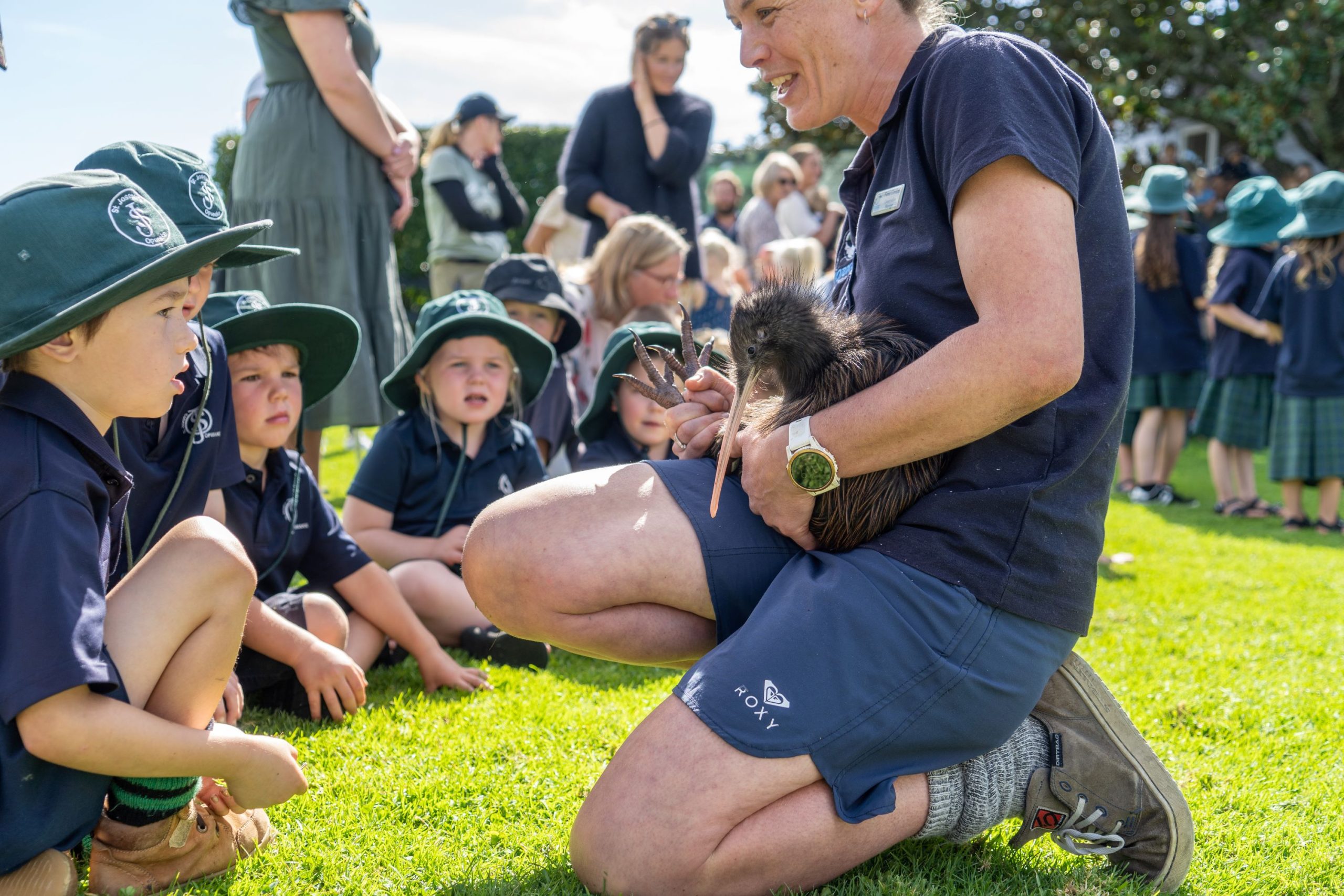More kiwi on Kaitake join growing population

More kiwi were released onto Kaitake on April 5, joining a growing population.
A ceremony at Ōākura School yesterday signalled the start of kiwi release season with students from a range of coastal schools getting the chance to see five kiwi up close before they were released into bush on Kaitake.
About 20 kiwi will be released on Taranaki Maunga and Kaitake area over the next few months. It’s the fourth year that kiwi bred in the Taranaki Kohanga Kiwi at Rotokare, a partnership between the Taranaki Kiwi Trust and the Rotokare Scenic Reserve Trust, near Eltham, will be moved to new homes within Te Papakura o Taranaki (Egmont National Park).
Taranaki Kiwi Trust Ranger Toby Shanley said most of the 20 kiwi released in the last two years had paired up and had chicks. He estimated the kiwi population on Kaitake was now at least 30-40. “We know from our monitoring they are having chicks, although we don’t have exact numbers as the next generation are not electronically tagged.”
Department of Conservation Taranaki Operations Manager Gareth Hopkins says the release is a prime example of the partnership with the community working well. “Throughout the community everyone has rallied together to control pests. It’s because of all that hard work from rangers and volunteers that we’re able to keep releasing kiwi and enjoy seeing other native species coming back.”
Taranaki Mounga Project co-director Sera Gibson said almost all possums on Kaitake were gone due to trapping efforts, thanks to staff across organisations and a large number of dedicated volunteers. “We’re continuing to keep at it to suppress predators and now focusing on stoats and rats, along with extending our trapping network right around the maunga.”
The ceremony was a good celebration for the multiple groups involved including Ngā Mahanga a Tāiri hapū, Department of Conservation, the Kaitake Ranges Conservation Trust, Te Ara Taiao, schools, Rotokare Scenic Reserve Trust and the Taranaki Kiwi Trust.
Tāne Manu, from Te Ara Taiao – an environmental educational programme working with schools, hapū and conservation groups, said the ceremony was for all the young people there, many of whom had been involved with trapping and monitoring birds. “These taonga are for our children and generations to come,” he said.
With increasing numbers of kiwi it was crucial that dogs, which are illegal in Te Papa Kura o Taranaki, are kept away. Cameras are still capturing people walking their dogs on Kaitake.

